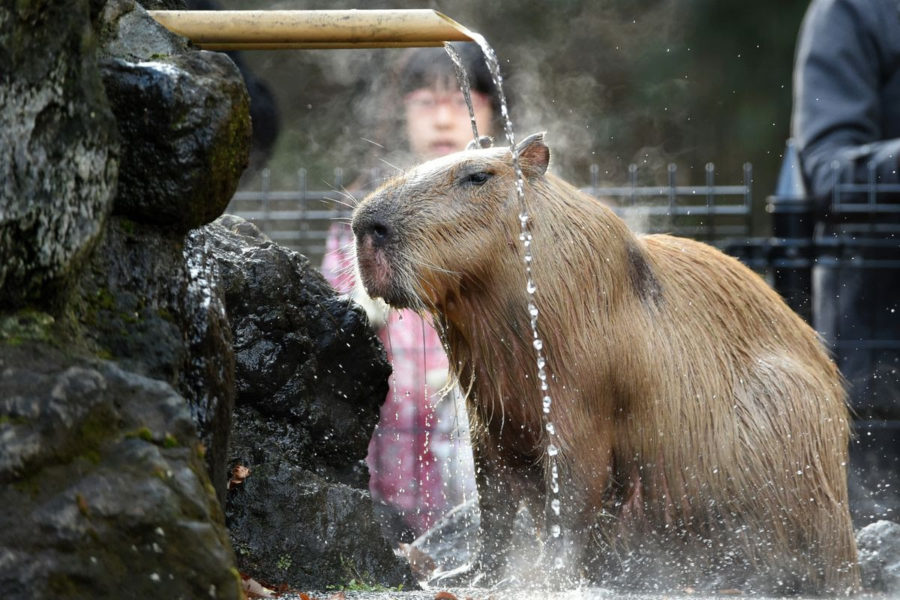Feature Creature: Capybara
April 1, 2019
Indigenous to South America, the world’s largest rodent, the Capybara, likes to congregate in groups along different lakes and rivers. Capybaras are very good swimmers, much like their smaller counterpart the beaver, and have oily, water-resistant fur that covers their thick skin. Due to this creatures’ grassland habitat, the “water pig” is specially equipped for its habitat with partially webbed toes and the eyes, nose and ears similar to that of a hippopotamus. This creature also has a vestigial tail that has subsided due to evolution. A Capybaras’ semi aquatic lifestyle is essential for survival as they need water in order to stay cool under intense sun and seek refuge from predators. To stay hidden, a Capybara can stay under water up to 5 minutes as well as using the water to escape from predators.
As far as its diet, the Capybara eats water plants and grasses and they tend to eat at dawn and dusk. The hippo-like creature also eats its own feces most mornings, as it is rich in nutrients and protein. A Capybaras diet is very important for their teeth as they are worn down by the grasses that the animal consumes. Due to the teeth continuously growing, it’s imperative that aquatic plant life is incorporated into their diets since it constantly wears down the teeth.
The mating process of the Capybara population happens throughout the year, but most significantly at the beginning of the rainy season. Most mating happens in the water and the male marks its territory by defecating around its chosen area. Young Capybaras are born after about 150 days are from litters that can be from two to eight youngs. Capybaras are not an endangered species as of yet, but they are threatened with deforestation and illegal poaching for its teeth, skin, and fur. Overall they are a stable population, that will hopefully stay that way over the many years to come.












